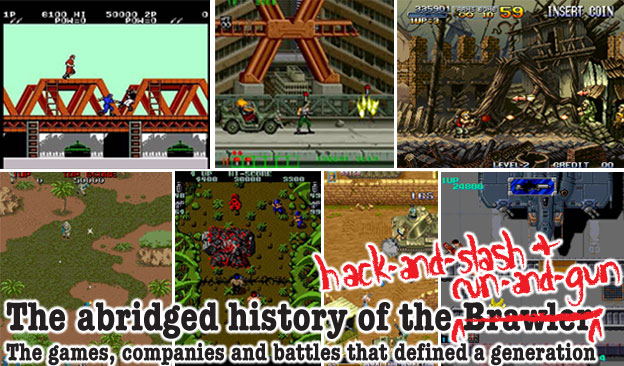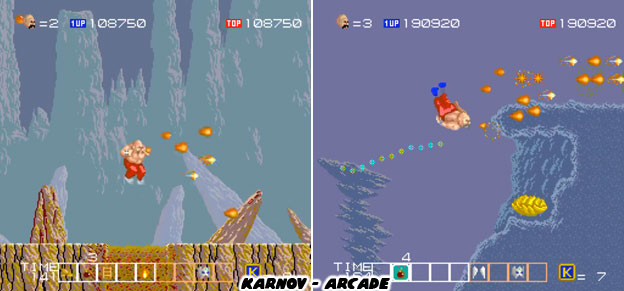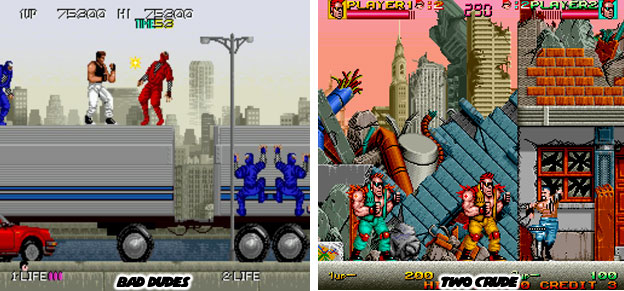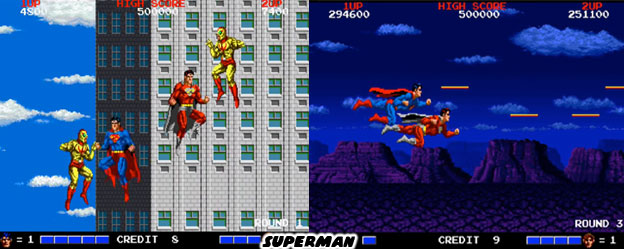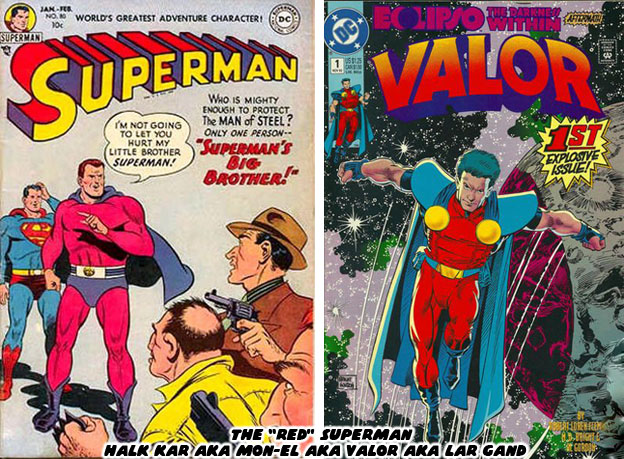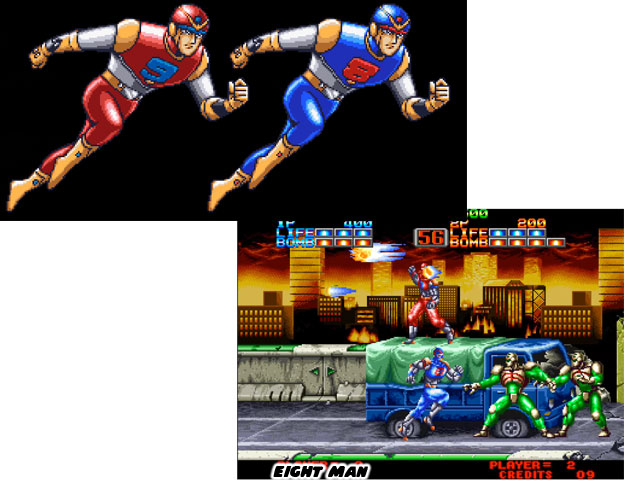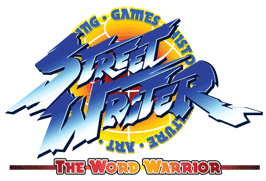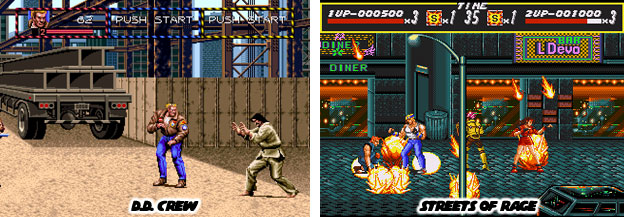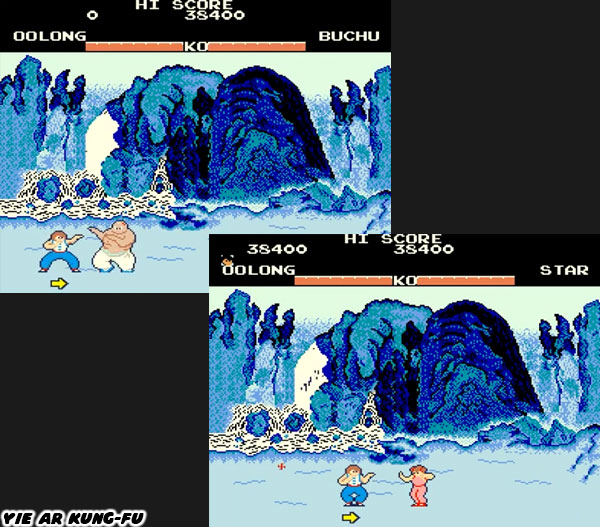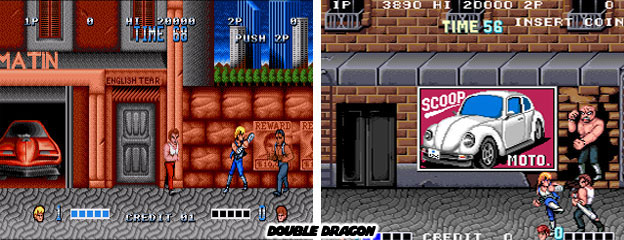If you would like to sponsor me please visit my Patreon page and consider donating each month, even as little as $1 would help make better blogs and even podcasts!
Wednesday, March 30, 2016
The Abridged History of the Brawler, a pre-rumble...
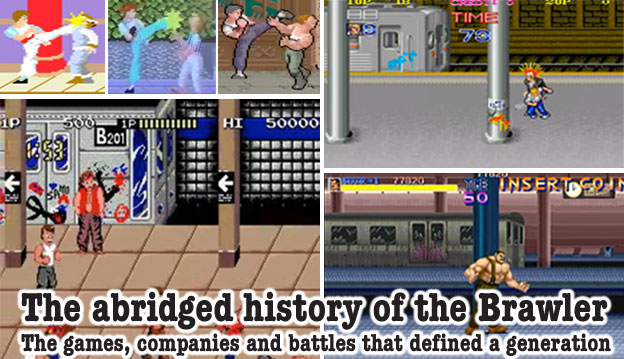
Over the next few weeks I'm going to be looking at one of my favorite all-time genres, the Brawler. This was originally a series that I ran on 1UP but I decided to revisit it and update a few entries. Now note that I call the genre the "Brawler." Other people and game sites call the genre "Beat-em Ups." But those people often call fighting games beat-em ups as well. I would contend that the fighting game and the brawler are actually two completely different genres. A fighting game is traditionally a one-vs-one game. Whether it's two martial arts masters, or a robot versus a demon or two dinosaurs going head-to-head, there is always one player versus another (sometimes a PC opponent instead). That is by my definition a fighting game. There are usually a few things that most fighting games have in common. There is a scoring system, a way to track health and often a time clock or ring out rule as well. Again the fight is usually one on one. There is the rare exception where the original Fatal Fury actually allowed two versus one battles and it would still be considered a fighting game. For the most part however a fighting game is one vs one.
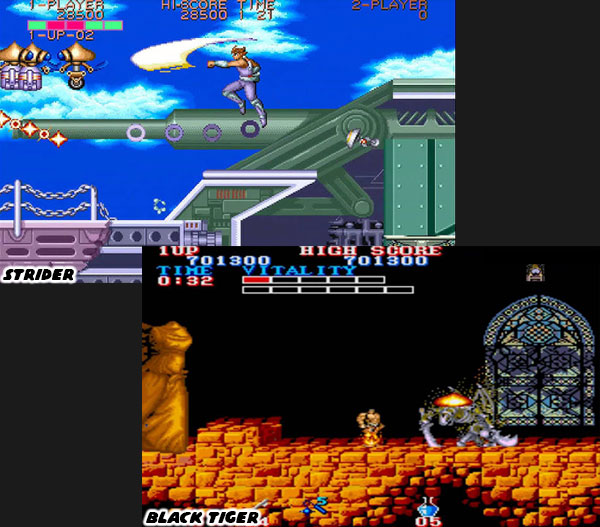
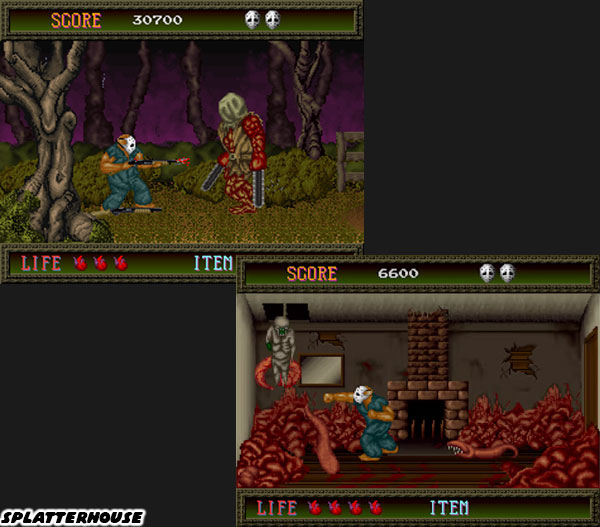
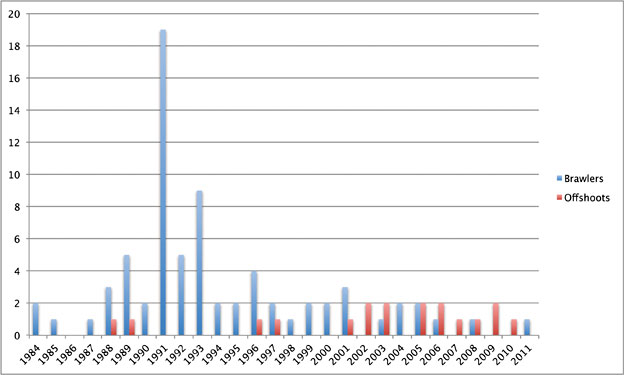
The Brawler, just like every other genre, came from somewhere. The early generation of arcade hits were inspired, if not outright stolen, from comics and movies. These games would then become adapted to the home consoles as a sort of faded copy of a familiar idea. Star Wars, Star Trek, various anime shows, manga and comic books all had a hand in shaping the history of game designs. The developers on the first batch of action titles often looked at action movies for inspiration. There was a lot of crossover to influences for the early action games, fighting games and brawlers. The action movie star was often a kung-fu expert. After all if you are going to have a story where one person can take out an army of opponents then they better know how to fight. There was no bigger star on the planet than Bruce Lee, at least this was the case back in the '70s. The young developers in Japan and the United States would have been greatly influenced by the man and his movies while growing up. When they started working on the first wave of action arcade games, almost a decade later, then there was usually one person they all looked to. It didn't matter how the artists colored or animated the early sprite heroes, there was something very familiar about the way they appeared...

The presence of Lee actually worked in favor of these early games. We had an actor and martial artist that dressed in very clean and easy to read costumes in his films. The shirtless hero with dark pants would pop up on various character designs. When the early arcade and console systems had limited memory to work with then simple two-color costumes were perfect designs. Of course Lee's signature yellow jumpsuit with black stripe from the film the Game of Death would become iconic as well. The costumes that Lee wore, his haircut, stance and moves would influence character designs for the next few generations. From some of the earliest 2D fighting game characters to some of the first 3D fighting game characters, even the Flash-based fighting games and hybrid 2.5D fighters all had a Bruce Lee clone. Some of these were subtle nods to the actor but the majority stole his likeness.
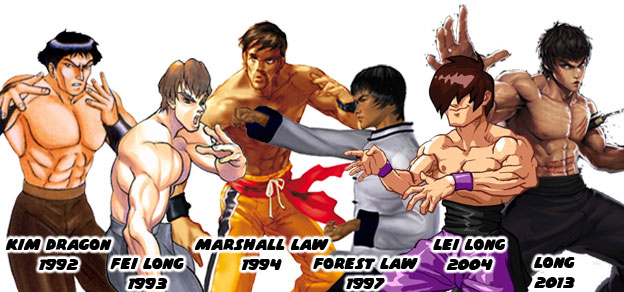
Lee moved with a quickness that had never been seen before. He punched and kicked so fast that it was a blur on screen. These would be elements that would become adapted in the early brawlers. Resources were very limited on the arcade machines at the time, especially memory. Perhaps a character had two frames of animation between a punch and kick. This would have seemed impossible on a bulky character but a skinny fighter like Lee actually did strike that fast. Even the trademark yell of Lee, his facial quirks and mannerisms would be reproduced on many characters in fighting games and brawlers. The godfather of the brawler, the one that I believe started it all was Kung-Fu Master by Irem. It was released in 1984, a pivotal year for arcade games. The title was a subtle nod to Lee's final film, the Game of Death. Players had to climb a tower filled with various fighters, and it got progressively more difficult the higher you went. The main character "Thomas" was searching for his girlfriend "Sylvia." Of course the names were changed from the original title, Spartan X. What didn't need translating was the lighting-quick strikes and familiar yell of the hero.
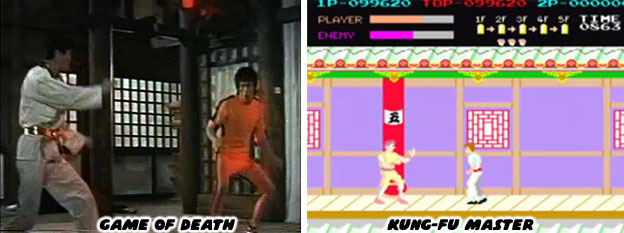
The US didn't really have a connection to martial arts cinema in the '60s or '70s. The action movies that the USA enjoyed right through the '80s had a different type of violence, one which was rooted on guns and revenge. The anti-hero was a popular subject in many of the movies. As it turned out the settings were a character all to themselves. The fictional version of New York in the John Carpenter film Escape from New York lit the imagination of the Japanese studios. Cities in western-themed games had to be big, dirty and overcrowded. The walls had to be covered in graffiti and colorful gangs patrolled every corner. Japanese studios began creating impressions of these cities, based on cult films like Death Wish and Streets of Fire for the earliest and often most successful brawling franchises. Double Dragon and Final Fight were two of the biggest sellers and they introduced audiences to a modern "western" metropolis overrun with gangs.
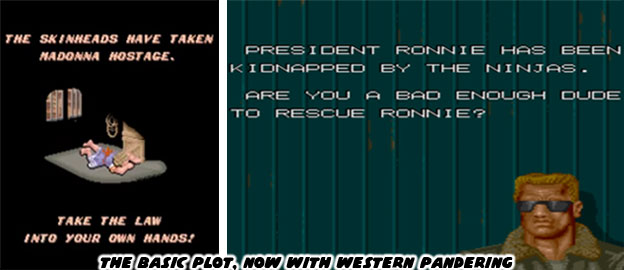
The setup for most of the games was simple. A person of interest was usually kidnapped, often a girlfriend, a finacee and at least in one case it was the President of the United States. Seeing as how the Japanese were shamelessly pandering to Western audiences they would drop names like pop singer Madonna and Ronnie, the nickname of President Ronald Reagan, into their games. If the brawler could be compared to a film genre then it would be the cult action film. Not quite a summer blockbuster yet not lowbrow enough to be a "grindhouse" picture (with the exception of Splatterhouse that is). The Brawler was nothing short of mindless action, it was like the perfect summer movie for eating popcorn, drinking soda and turning off your brain for an hour. After all, the payoff after saving President Ronnie was getting hamburgers. It was hardly Oscar-caliber material the Japanese were interpreting.

Of course for most of these movies audiences would wonder why the cops didn't stop the bad guys. There was usually two reasons for this. The cops were either too afraid of the gangs or they were being paid off not to do their job. The gangs often had leaders and these were not the typical thug. They were instead rich crime bosses living in the lap of luxury. Sometimes they were politicians or even heads of corporations. Players figuratively and literally fought their way to the top in many of the games. As dirty subways gave way to abandoned amusement parks and crowded alleyways the player would find themselves fighting in nicer and nicer neighborhoods. Eventually they would end up in the suite or penthouse of a millionaire. It turned out that the person that was pulling the strings was often the richest person in the city. They could have had it all but instead messed with the wrong people. The punishment for kidnapping or putting a city at war was often a long drop for the bad guy.
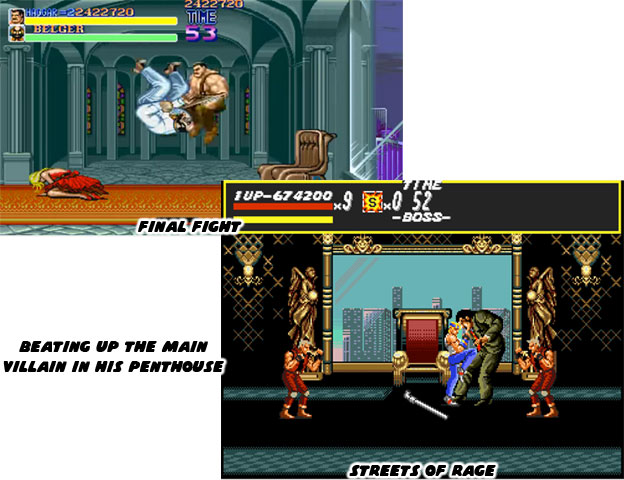
There were many other plots to explore, many more heroes to become and many more villains to throw through windows. The brawler was and continues to be a fun genre. I hope there are a few games mentioned in this series that rekindles some memories. Perhaps I'll highlight a few that you may not have played and give you a reason to track them down. Whatever the case I hope you stick around and as always share a comment. As always if you enjoyed this blog and would like to sponsor me please visit my Patreon page and consider donating each month, even as little as $1 would help make better blogs and even podcasts!
Monday, October 5, 2015
How fight culture became fighting game history, part 42
Gouki and Silber demonstrated the price that had to be paid to be two of the best fighting game bosses ever. They were willing to fight to the death at each and every encounter. Very few fighting game characters were ever written with that level of intensity. The pair were willing to kill in order to achieve their goals. The Dictator and the other bosses were willing to do the same but Gouki and Silber did not have a different agenda. They did not want to rule the world or even a small nation. They simply wanted to be the greatest fighters that had ever lived. By their definition the most lethal art proved who had true power. This took them out of the realm of bosses and made them symbols of evil.
The lack of respect that the two villains had for human life extended to themselves. These boss characters were willing to enter a fight even if the numbers were against them. They were willing to punish their own bodies, cripple their own bones and deform themselves for the sake of mastering killing strikes. Gouki and Silber had powerful bodies but gruesome expressions. Their faces were a mockery of the humanity they left behind. In the official character are they almost looked like they were wearing masks. Their features carved by a life of constant battle. The scars that Silber wore were clearly visible but Gouki's were hidden, they were scars on his soul. When Gouki killed his own master and brother he had done damage to himself that he would never be able to undo.
You can imagine that a tall black man in Japan studying karate, dressing in traditional garb, training in the traditional format was a strange sight for conservatives and traditionalists. Surely no gaijin could grasp the nuances of Kyokushin, the fighting spirit. Williams, and most Americans are want to believe that anything is possible and a form can be learned and understood by the people, not solely the Japanese. To prove the authenticity of the karate format and dispel the legends from the truth Williams and his trainers staged some fights. One pitted the man against a bear. News reporters were invited to capture contest on film.When news of this encounter reached the states a few die-hards like Willie Williams began training in the Kyokushin style to become fighting machines as well. Williams even staged a match against a bear for the documentary "The Strongest Karate."
Marco Rodrguez (translated to Khushnood Butt for the US) for the game Garou, Mark of the Wolves was very closely modeled after Williams. To be fair he was inspired by William Oliver, Willie Williams and Charles Martin, the three black Americans better known as the Fighting Black Kings, from the 1976 documentary on the first world Kyokushin fighting tournament. Marco had immersed himself in the study of the fictional Kyokugen (extreme) form of Karate. This is the form invented by Takuma Sakazaki and passed onto his son Ryo and his friend Robert Garcia. Marco believed in the form as the absolute best and touted its superiority with a fanatical zeal in the game, his eyes welling with pride every time he thought about the art and his master. This level of passion, combined with his moves actually being solid, enamored him to gamers. The character worked abroad despite the double stigma of race and karate fool. Gamers were able to see past those conventions because he was a reliable karate-style fighter who played like the traditional Art of Fighting heroes even within a Fatal Fury title. Marco worked very well within the game as well as canon and wasn't simply a joke character for the sake of being a joke character.
It turned out that a thousand years ago there was an encounter that could go down as something too amazing to be true. The pilgrim Wu Song was traveling through a village in China. He had stopped by an in for some rest. The villagers warned Wu that there was a man-eating tiger nearby and that it was dangerous to take a certain bridge out of town, especially once it started to get dark. After a few drinks Wu thought that it would be a good idea to take the bridge and see what happened. Sure enough the tiger was there and being courageous (or crazed with booze) Song attacked the tiger. He had a stick with him but the tiger broke that quickly. Song in a fit of rage managed to get close to the tiger and kill it with repeated blows to the head. Wu Song was a character in The Water Margin. The character was fictional but many of the men and women in the novel were inspired by actual events. It was possible that a kung-fu practitioner with more ability than sense actually did kill a tiger with his bare hands. When the writer of the Water Margin heard of the legend he figured out a way to incorporate it into the series.
Domesticated bears had actually been used in some circus sideshows for over a century. The bears would usually only "wrestle" their trainers, because they were comfortable with them. Bears felt like they were playing and not actually fighting. In some rare cases a circus might let an audience member try to wrestler a muzzled bear. The bear would usually knock the person over and sit on them easily to end the match. But every now and then a story would come out where a person got the upper hand. This was the inspiration behind the Australian folk song about William Sinclair who defeated a bear in a match in Queensland.
In Battle K-Road the secret boss was named Mr. Bear. It turned out to be an actual grizzly bear and was among one of the most difficult opponents in any game. The game was over-the-top as one could imagine but it retained some charm. These types of encounters would not have been acceptable in the genre if not for people like Oyama and Kolov who actually fought the beasts and lived to tell the story.
In a similar fashion Silber traveled the globe putting down the animals he tested himself against. He showed little mercy for the other fighters he faced and was willing to put them out of their misery as well. Silber seemed to relish in his power and technique. It had been speculated that the fur on his uniform was taken from a polar bear he had killed and not from a wolf. Few aside from Silber himself knew what points around the world he had visited. Gamers were left to believe that he had wandered into the frozen arctic looking for a new challenge and had returned with the pelt after finding no suitable opponent.
The physical appearance and attacks of the two bosses made them stand apart from the cast and even other villains. Yet there was a point where villains were too powerful and too evil for the genre. When pushed to the extreme ends the evil characters could break the suspension of disbelief from the gamer. Gouki had one such makeover in Street Fighter IV. It turned out that Gouki or even Shin Gouki (the white-haired variation) were not the most powerful incarnation of the character. A third form known only as Oni or Demon in Japanese was introduced by the SF IV designers. Oni was the manifestation of the Dark Hadou, or evil power which Gouki possessed, or rather which had possessed Gouki. The character grew long, spiky white hair, and a large underbite like an ogre with small tusks protruding. His skin even went from clay-colored to blue. Gouki no longer had the elements of a humanized lion but instead the wholesale appearance of a Nio, or protector of the underworld.
The lack of respect that the two villains had for human life extended to themselves. These boss characters were willing to enter a fight even if the numbers were against them. They were willing to punish their own bodies, cripple their own bones and deform themselves for the sake of mastering killing strikes. Gouki and Silber had powerful bodies but gruesome expressions. Their faces were a mockery of the humanity they left behind. In the official character are they almost looked like they were wearing masks. Their features carved by a life of constant battle. The scars that Silber wore were clearly visible but Gouki's were hidden, they were scars on his soul. When Gouki killed his own master and brother he had done damage to himself that he would never be able to undo.
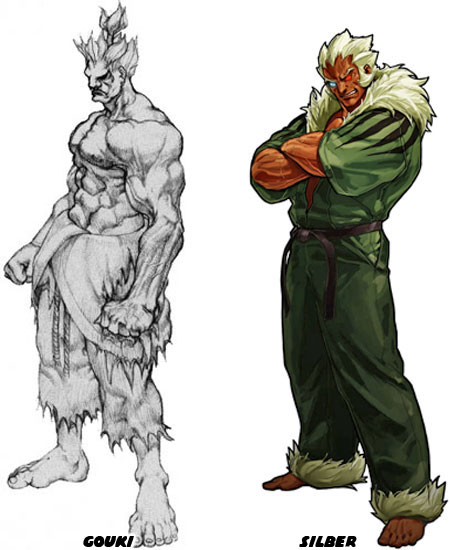

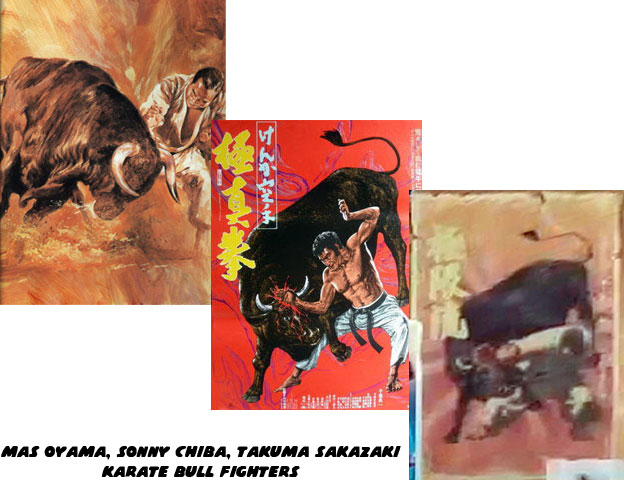
You can imagine that a tall black man in Japan studying karate, dressing in traditional garb, training in the traditional format was a strange sight for conservatives and traditionalists. Surely no gaijin could grasp the nuances of Kyokushin, the fighting spirit. Williams, and most Americans are want to believe that anything is possible and a form can be learned and understood by the people, not solely the Japanese. To prove the authenticity of the karate format and dispel the legends from the truth Williams and his trainers staged some fights. One pitted the man against a bear. News reporters were invited to capture contest on film.When news of this encounter reached the states a few die-hards like Willie Williams began training in the Kyokushin style to become fighting machines as well. Williams even staged a match against a bear for the documentary "The Strongest Karate."
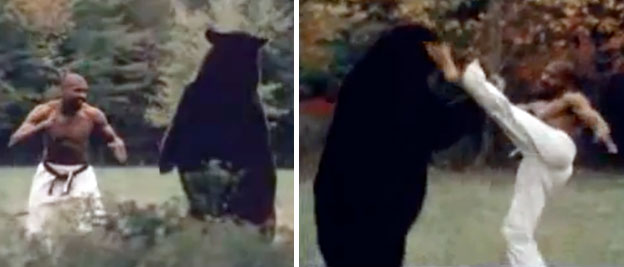
Marco Rodrguez (translated to Khushnood Butt for the US) for the game Garou, Mark of the Wolves was very closely modeled after Williams. To be fair he was inspired by William Oliver, Willie Williams and Charles Martin, the three black Americans better known as the Fighting Black Kings, from the 1976 documentary on the first world Kyokushin fighting tournament. Marco had immersed himself in the study of the fictional Kyokugen (extreme) form of Karate. This is the form invented by Takuma Sakazaki and passed onto his son Ryo and his friend Robert Garcia. Marco believed in the form as the absolute best and touted its superiority with a fanatical zeal in the game, his eyes welling with pride every time he thought about the art and his master. This level of passion, combined with his moves actually being solid, enamored him to gamers. The character worked abroad despite the double stigma of race and karate fool. Gamers were able to see past those conventions because he was a reliable karate-style fighter who played like the traditional Art of Fighting heroes even within a Fatal Fury title. Marco worked very well within the game as well as canon and wasn't simply a joke character for the sake of being a joke character.
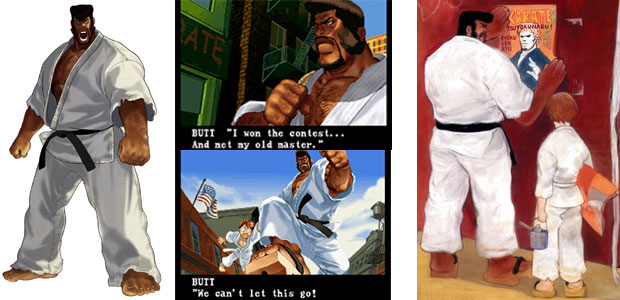
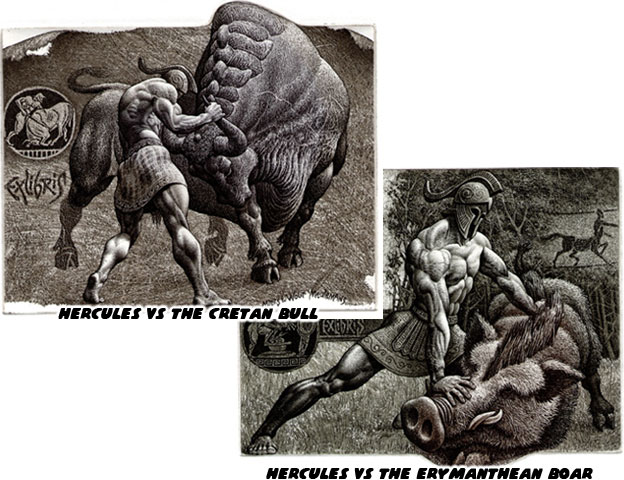
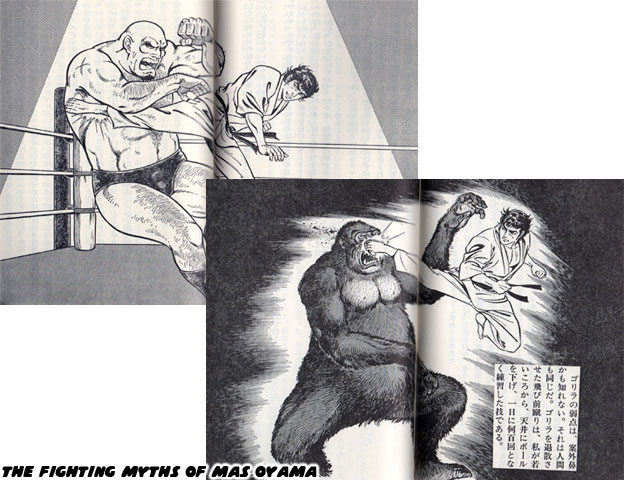
It turned out that a thousand years ago there was an encounter that could go down as something too amazing to be true. The pilgrim Wu Song was traveling through a village in China. He had stopped by an in for some rest. The villagers warned Wu that there was a man-eating tiger nearby and that it was dangerous to take a certain bridge out of town, especially once it started to get dark. After a few drinks Wu thought that it would be a good idea to take the bridge and see what happened. Sure enough the tiger was there and being courageous (or crazed with booze) Song attacked the tiger. He had a stick with him but the tiger broke that quickly. Song in a fit of rage managed to get close to the tiger and kill it with repeated blows to the head. Wu Song was a character in The Water Margin. The character was fictional but many of the men and women in the novel were inspired by actual events. It was possible that a kung-fu practitioner with more ability than sense actually did kill a tiger with his bare hands. When the writer of the Water Margin heard of the legend he figured out a way to incorporate it into the series.
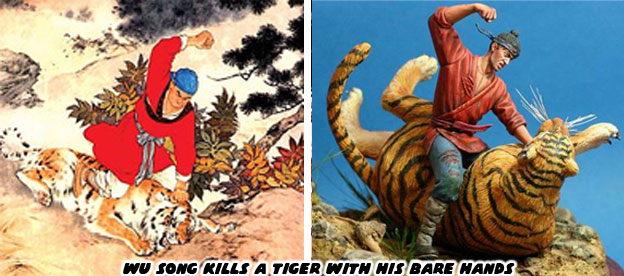
Domesticated bears had actually been used in some circus sideshows for over a century. The bears would usually only "wrestle" their trainers, because they were comfortable with them. Bears felt like they were playing and not actually fighting. In some rare cases a circus might let an audience member try to wrestler a muzzled bear. The bear would usually knock the person over and sit on them easily to end the match. But every now and then a story would come out where a person got the upper hand. This was the inspiration behind the Australian folk song about William Sinclair who defeated a bear in a match in Queensland.
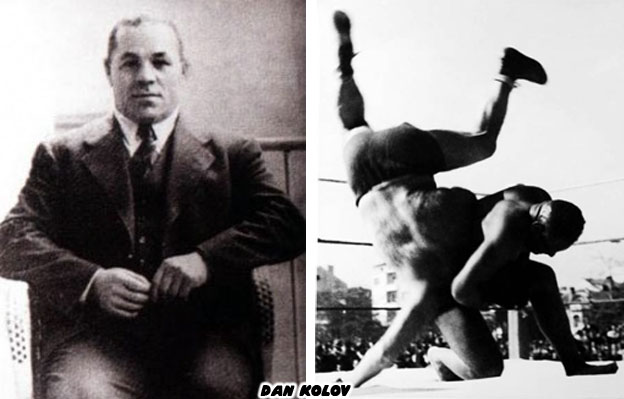

In Battle K-Road the secret boss was named Mr. Bear. It turned out to be an actual grizzly bear and was among one of the most difficult opponents in any game. The game was over-the-top as one could imagine but it retained some charm. These types of encounters would not have been acceptable in the genre if not for people like Oyama and Kolov who actually fought the beasts and lived to tell the story.

In a similar fashion Silber traveled the globe putting down the animals he tested himself against. He showed little mercy for the other fighters he faced and was willing to put them out of their misery as well. Silber seemed to relish in his power and technique. It had been speculated that the fur on his uniform was taken from a polar bear he had killed and not from a wolf. Few aside from Silber himself knew what points around the world he had visited. Gamers were left to believe that he had wandered into the frozen arctic looking for a new challenge and had returned with the pelt after finding no suitable opponent.
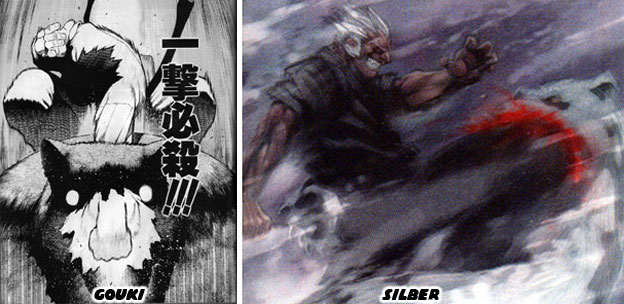
The physical appearance and attacks of the two bosses made them stand apart from the cast and even other villains. Yet there was a point where villains were too powerful and too evil for the genre. When pushed to the extreme ends the evil characters could break the suspension of disbelief from the gamer. Gouki had one such makeover in Street Fighter IV. It turned out that Gouki or even Shin Gouki (the white-haired variation) were not the most powerful incarnation of the character. A third form known only as Oni or Demon in Japanese was introduced by the SF IV designers. Oni was the manifestation of the Dark Hadou, or evil power which Gouki possessed, or rather which had possessed Gouki. The character grew long, spiky white hair, and a large underbite like an ogre with small tusks protruding. His skin even went from clay-colored to blue. Gouki no longer had the elements of a humanized lion but instead the wholesale appearance of a Nio, or protector of the underworld.
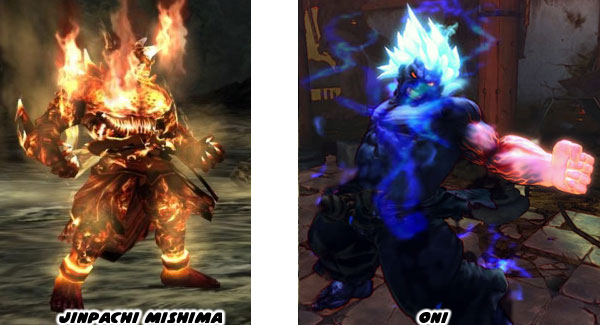
Thursday, July 2, 2015
Representation Matters! Or, what happened to Birdie, part 3...
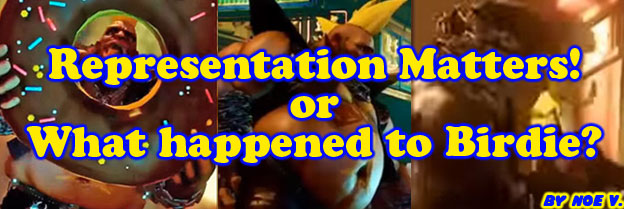
I'll get right to the punchline, fat characters were introduced into the recent crop of fighting games because they were funny to look at. For some reason Capcom producer Yoshinori Ono had decided to steer several characters into the absurd. When I saw what the team had done to Birdie in Street Fighter V I was deeply saddened. I thought to myself why would they do such a thing to such an original design. I could not think of a context where his transformation was justified. None of the other characters brought back had gotten fat. If the excuse was that punks got fat and lazy in their old age I would have to ague against that. Sure everybody may get out of shape as they get older but some in the punk rock community would argue that sentiment.
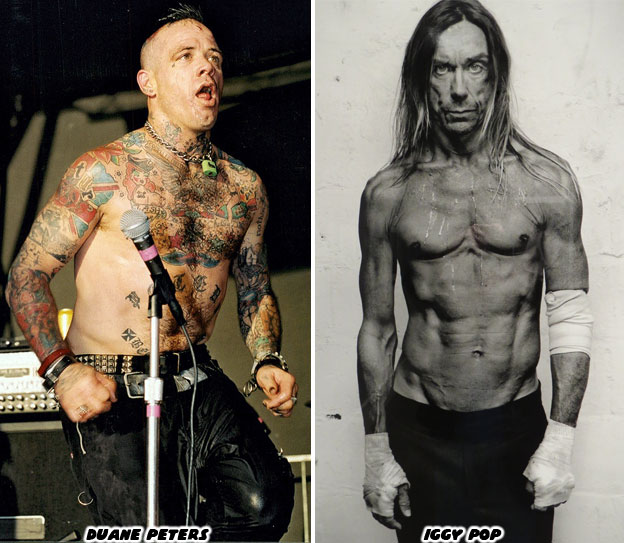
Singer, skateboarder Duane "The Master of Disaster" Peters was into the punk scene from a young age. He was as tough as any long-time punk and had lived a life that would have killed many other people. A veteran of the road he skates as hard as he ever did. He was also born in 1961, during the golden era of skateboarding in Southern California. But let's go even further back. The iconic Iggy Pop also works hard and rocks harder. He was born 1947 and was a catalyst of the punk movement. Iggy has a body better than most men half his age and also shows no sign of slowing down. So when everything about Birdie (up until) now says punk I don't think of fat bikers (which is really what he became). Instead I think of rockers like Iggy and Peters. Birdie should remain as timeless as the other Street Fighter characters. If the developers cannot meet the character with that basic understanding then maybe he shouldn't be in the game.
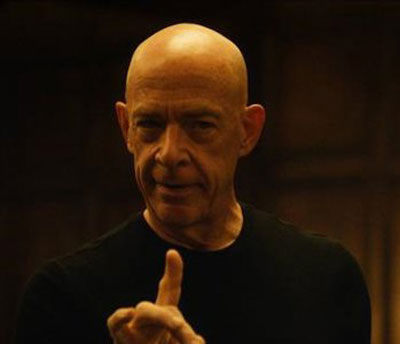
Let's make this perfectly clear. I am not against fat characters in fighting games. I am against silly gimmick characters in franchises that do not need them. Before Birdie got a makeover an even older, and more popular Capcom icon had gotten the same treatment. Mega Man was announced as a playable character for Street Fighter X Tekken. When most people thought of Mega Man they imagined a blue robot that looked like a kid wearing a blaster on his arm and a helmet on his head. What no one could have imagined was a fat guy with a laser pistol and some tights.
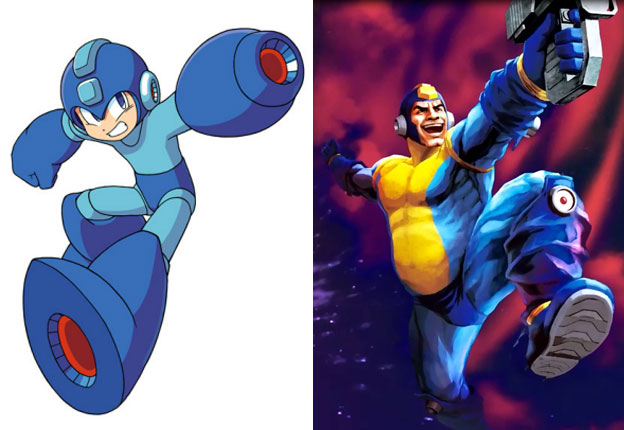
It was an absurd redo of a classic character, one that was based on the poorly designed NES box art from North America. It was more outlandish presentation than say the Bionic Commando as a morose ex-soldier in dreadlocks. Yet somehow somebody at Capcom not only thought this was a good idea, they pushed for it to get done. The artists, animators, programmers and developers all had to model and create this fat guy in a costume and balance him out against the rest of the Street Fighter and Tekken cast. I would assume that it was the producer, Mr. Ono that made the call. Let's go back and look at his short list of questionable decisions in the fighting game arena. He was ultimately responsible for getting Hakan into Street Fighter IV and giving him the silly oiled up attacks. For having T. Hawk sit on opponents and make the Native "how" gesture. For turning El Fuerte from a traditional masked wrestler to a cooking obsessed parody. Of course there was the greatest misstep of all, the addition of Rufus to the Street Fighter universe.
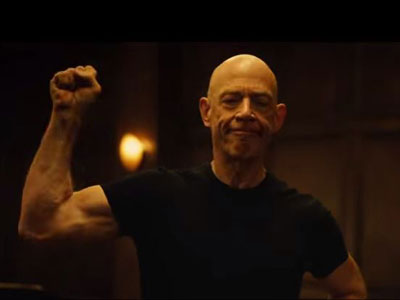
I do not hate fat people in fighting games. I love fat people in fighting games. I love to see diversity in body types, body shapes, skin color, age and ability more than anybody else I know. I love the fact that fat characters have been a part of fighting games since the earliest days. King Hippo in Nintendo's Punch-Out!! and Buchu from Konami's Yie Ar Kung-Fu were two of the earliest fat characters in the genre. The were swift, powerful, had great attacks and distinct looks. Hippo was a likable character and was paralleled in real life by people like super heavyweight boxer Eric "Butterbean" Esch. Capcom had even included fat people in their action games before Street Fighter II debuted.
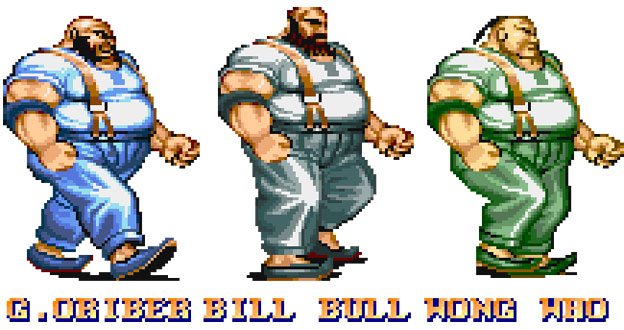
G. Oriber, Bill Bull and Wong Who were members of the Mad Gear Gang. They fought the heroes in Final Fight. The trio, like the rest of the gang, would get beaten up then return for more punishment later on in the stages. The three characters were heavy set but also very muscular. Being nothing more than pallet swaps (simple color changes) with a few cosmetic changes to the heads they were a quick way for the developers to make the cast of villains look numerous. These characters also showed a range of diversity. Oriber and Bull looked Western and Who was presumed to be Chinese. The archetypes were actually inspired by a heavy-set man that used to menace the local bars near Capcom's headquarters in Japan. This added an extra layer of dimension to the brawlers as I could imagine the Capcom employees had to sidestep this person after a night out on the town. I always thought that the fat characters worked well in the series and looked forward to their counterparts in the Final Fight sequels.
The tradition of adding respectable fat fighting game characters was actually observed by several studios and not solely Capcom. Two of the most massive fighters in a fighting game turned out to be eerily similar. Kimala the Bouncer from Capcom's Muscle Bomber / Saturday Night Slam Masters series (1993) and Burnov from SNK's Double Dragon (1995) fighting game were two of fattest game characters ever created. Their arms and legs were often wider than their entire opponents torsos. The two also happened to have Mohawk haircuts to add to their already imposing presence. There was nothing playful or silly about the fighters. They were there to brutalize opponents. Kimala was actually the BWA (Blood Wrestling Association) Heavyweight Champ. Burnov was a post-apocalyptic warlord, not far removed from the villains in Hokuto No Ken / the Fist of the North Star manga series.
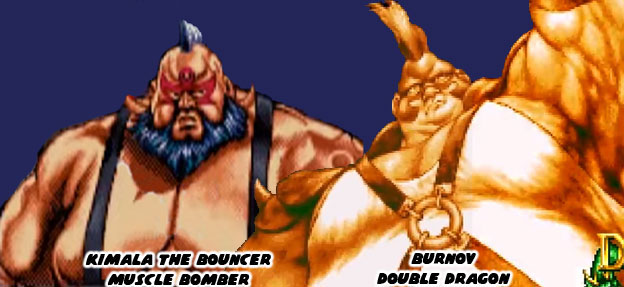
Speaking of which, Hokuto No Ken was a very influential manga series from the early '80s. It colored the development of many fighting games. One of the evil warlords from the comics was called King Heart. He was tall and fat, with deep scars on his forehead. He also had a distinct tattoo on the side of his head. It was a heart with a K for King, modeled after the classic Bicycle company playing cards. The heart tattoo placed on the head of Birdie as a nod to the character. Despite dying a gruesome death in the comics King Heart turned up in a few fighting games, including an arcade version.
Hokuto No Ken series creator Tetsuo Hara was actually a fan of the Street Fighter series and was called in to help with character designs for the wrestling game Muscle Bomber. He created a lineup that was in almost every way as unique as the original World Warriors from Street Fighter II. He modeled Kimala after the Sudanese (actually Canadian) wrestler Larry Robert Shreve, better known by his ring name Abdullah the Butcher. Abdullah was six feet tall and over 350 pounds. He had studied some karate and judo growing up. He found a living through pro wrestling. Abdullah had a very distinct look. He wore red pants with a sash and had curly-toed shoes, a costume that was supposed to bring up images of ancient Arabia. His most defining feature was his forehead. After years of blading (cutting himself to make the matches bloody) his head was left with very deep scars. Abdullah was never much of an athlete so his matches were often standing brawls where he would bring out illegal weapons, like a fork, which he would then use to stab opponents and bust them open so that they bled as well.
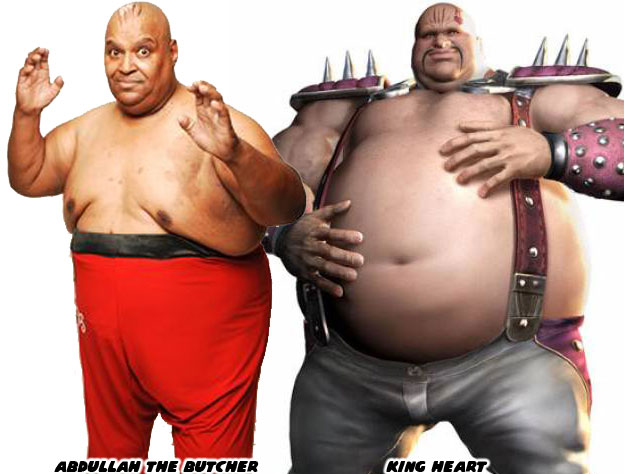
Tetsuo Hara did more than develop fighters, he helped create the backstory for Capcom's wrestling universe. Brutality was what the BWA was known for. The "good guys" wrestled in the CWA or Capcom Wrestling Association. The wrestlers would cross between promotions and have an all-out war trying to find out who was the best wrestler of all. I always admired Kimala as a character and also what Hara was trying to represent through him. The influence that he had on Street Fighter was immeasurable. The boots of Abdullah were paralleled in the curly-toed shoes worn by Birdie. But that was not the only thing that Hara had shaped for the character. Birdie was actually tag team partners with Titan the Great. Titan was the giant of the Muscle Bomber series. He was absolutely massive and just a centimeter or two shorter than Hugo Andore from Final Fight / Street Fighter. In the official character art between Titan and Birdie we could see that Optimus Prime and Megatron from the Transformers were characters on the rings of Birdie. Not only that but Birdie had a Decepticon tattoo on his shoulder. These were details that the people working on Street Fighter V had overlooked or simply did not know.
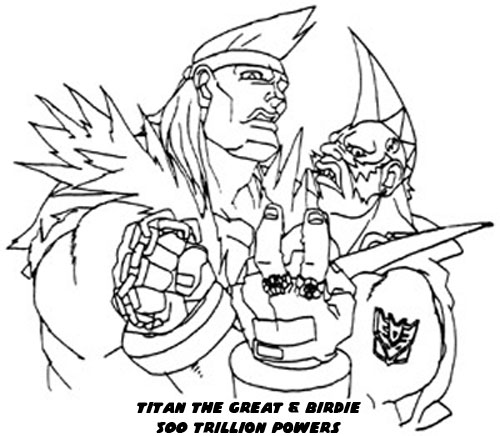
As an aside Abdulah had a hand in influence other fat characters in gaming. The wrestler had been at his craft through the '70s, often touring Japan. There was no doubt that Hara as well as other artists and developers were familiar with the character from his trips. The Middle Eastern look of the Butcher influenced the creation of one of the early console and arcade adventure heroes. Jinborov Karnovski aka Karnov was a fire breathing, ex-circus strongman from East Russia. His red pants, curly-toed boots and heavyweight frame were distinctly Abdullah's. If they were not then he was at least based on old Arabic folklore. The arcade game and NES adaptation of Karnov appeared in 1987. Data East was one of the forefathers of the fighting genre, they had created Karate Champ after all. Instead of focusing on one-on-one combat with fighters of different abilities they instead decided to wrap adventure games around these fighters. Karnov would face fantastic monsters on his journey, similar to a character like Sindbad, the pirate of Arabian legend. In addition to his strength Karnov also had the ability to breath fire. This was an important detail that would shape other characters and games.
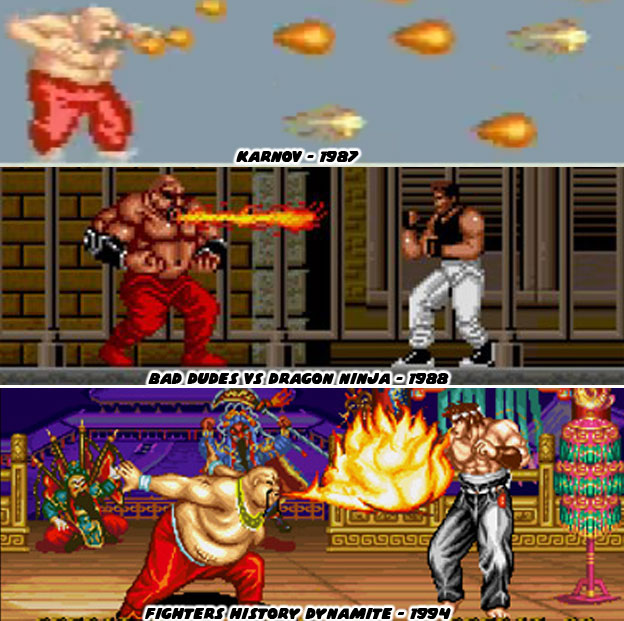
A year after his debut Karnov appeared as the first level boss in the game Bad Dudes vs Dragon Ninja. This appearance meant that Karnov was a modern character but with ancient powers. His adventure was therefor not set in ancient times but instead in a part of the world where mythical creatures and demons existed. Karnov would fall off the radar for a few years. He would return in Fighters History Dynamite: Karnov's Revenge in 1994. Data East could not ignore the runaway success of Street Fighter II in the arcade and on home consoles. The publisher decided to create their own entry. The characters and controls in the original Fighters History were very similar to Street Fighter II. They were so similar in fact that Capcom took Data East to court for copyright infringement. Capcom lost the case and that precedence allowed other studios to create fighting games that also poached ideas from Capcom.
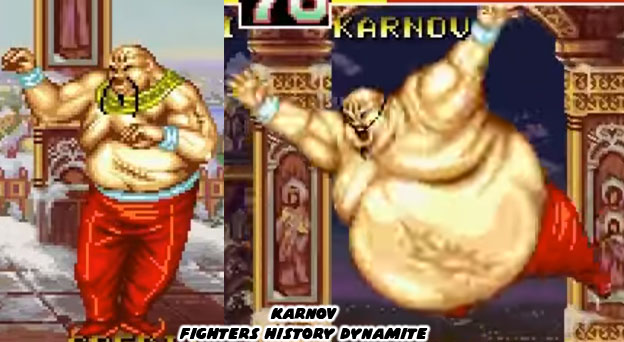
Here's the thing that I want all of my readers to pay attention to. In the original Karnov the character was heavy-set and each time he returned he became a bit fatter. This evolution of the character made sense in continuity. His ability to breathe fire, and his newfound ability to make himself a large balloon were based on ancient magic rather than martial techniques. It also made sense based on the origins of his look and powers. The costume that Abdullah the Butcher wore, the same costume of Karnov was based on ancient Arabia. In the classic story traditions of One Thousand and One Nights, Ali Baba and the Forty Thieves and the Seven Voyages of Sinbad there was a certain body type that kept turning up.
The fat characters were the strongest figures in the stories. Remember that thousands of years ago there were no such things as gyms or weight training programs. Big characters, fat characters, were universally understood as being the strong ones. Also fat characters could sometimes be seen as having status in society because they could afford to eat well. Fighters from these legends sometimes had magical properties. They had to have superhuman strength, be able to breath fire, and run across the sky in order to battle against the mythological characters. Sometimes these mythological characters could partner with them. Djinn or genie's could be summoned by the heroes. The would do this when they needed visit far off lands or destroy their enemies. These classic archetypes were actually featured in the game Arabian Magic by Taito in 1992.
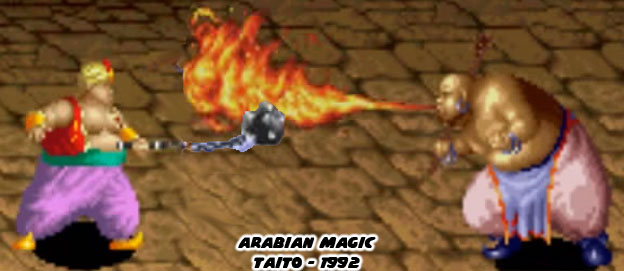
Heroes and villains in Arabian Magic could actually be fat fighters. They were not silly and they did not have some sort of gimmick (like eating bananas and donuts) in order to make them more interesting. Abdullah the Butcher would probably have fit into one of the old stories and definitely would have worked in the games as well. This is where the genius of Hara came into play. Not only was he a huge fan of pro wrestling, he was also very familiar with the classic storytelling traditions. Kimala was influenced by Abdullah but he maintained some of the special abilities from myth. The character could spit poison (a trick used by the Graet Mutah) or breath fire as well. This was a tradition that SNK was familiar with. They used it when they created Burnov. The character could breathe fire and even engulf himself in flames and run over opponents. If you study the costume of Burnov you can see how it was a modernized version of the ancient Arabian costumes.

These fat characters were well designed and demonstrated that those body types could work in a fighting game as well. It turned out that characters like Kimala and Karnov were actually the exception instead of the rule. In the next blog we shall take an even closer look at fat characters in the fighting genre and see how the industry changed the purpose of those figures. I hope to see you in the next entry. Please leave any questions or comments if you'd like. As always if you enjoyed this blog and would like to sponsor me please visit my Patreon page and consider donating each month, even as little as $1 would help make better blogs and even podcasts!

Singer, skateboarder Duane "The Master of Disaster" Peters was into the punk scene from a young age. He was as tough as any long-time punk and had lived a life that would have killed many other people. A veteran of the road he skates as hard as he ever did. He was also born in 1961, during the golden era of skateboarding in Southern California. But let's go even further back. The iconic Iggy Pop also works hard and rocks harder. He was born 1947 and was a catalyst of the punk movement. Iggy has a body better than most men half his age and also shows no sign of slowing down. So when everything about Birdie (up until) now says punk I don't think of fat bikers (which is really what he became). Instead I think of rockers like Iggy and Peters. Birdie should remain as timeless as the other Street Fighter characters. If the developers cannot meet the character with that basic understanding then maybe he shouldn't be in the game.
So are you against fat characters in fighting games?

No.
Let's make this perfectly clear. I am not against fat characters in fighting games. I am against silly gimmick characters in franchises that do not need them. Before Birdie got a makeover an even older, and more popular Capcom icon had gotten the same treatment. Mega Man was announced as a playable character for Street Fighter X Tekken. When most people thought of Mega Man they imagined a blue robot that looked like a kid wearing a blaster on his arm and a helmet on his head. What no one could have imagined was a fat guy with a laser pistol and some tights.

It was an absurd redo of a classic character, one that was based on the poorly designed NES box art from North America. It was more outlandish presentation than say the Bionic Commando as a morose ex-soldier in dreadlocks. Yet somehow somebody at Capcom not only thought this was a good idea, they pushed for it to get done. The artists, animators, programmers and developers all had to model and create this fat guy in a costume and balance him out against the rest of the Street Fighter and Tekken cast. I would assume that it was the producer, Mr. Ono that made the call. Let's go back and look at his short list of questionable decisions in the fighting game arena. He was ultimately responsible for getting Hakan into Street Fighter IV and giving him the silly oiled up attacks. For having T. Hawk sit on opponents and make the Native "how" gesture. For turning El Fuerte from a traditional masked wrestler to a cooking obsessed parody. Of course there was the greatest misstep of all, the addition of Rufus to the Street Fighter universe.
A-ha! I knew it, you do hate fat people in fighting games!

Pay attention because I do not want to repeat myself.
I do not hate fat people in fighting games. I love fat people in fighting games. I love to see diversity in body types, body shapes, skin color, age and ability more than anybody else I know. I love the fact that fat characters have been a part of fighting games since the earliest days. King Hippo in Nintendo's Punch-Out!! and Buchu from Konami's Yie Ar Kung-Fu were two of the earliest fat characters in the genre. The were swift, powerful, had great attacks and distinct looks. Hippo was a likable character and was paralleled in real life by people like super heavyweight boxer Eric "Butterbean" Esch. Capcom had even included fat people in their action games before Street Fighter II debuted.

G. Oriber, Bill Bull and Wong Who were members of the Mad Gear Gang. They fought the heroes in Final Fight. The trio, like the rest of the gang, would get beaten up then return for more punishment later on in the stages. The three characters were heavy set but also very muscular. Being nothing more than pallet swaps (simple color changes) with a few cosmetic changes to the heads they were a quick way for the developers to make the cast of villains look numerous. These characters also showed a range of diversity. Oriber and Bull looked Western and Who was presumed to be Chinese. The archetypes were actually inspired by a heavy-set man that used to menace the local bars near Capcom's headquarters in Japan. This added an extra layer of dimension to the brawlers as I could imagine the Capcom employees had to sidestep this person after a night out on the town. I always thought that the fat characters worked well in the series and looked forward to their counterparts in the Final Fight sequels.
The tradition of adding respectable fat fighting game characters was actually observed by several studios and not solely Capcom. Two of the most massive fighters in a fighting game turned out to be eerily similar. Kimala the Bouncer from Capcom's Muscle Bomber / Saturday Night Slam Masters series (1993) and Burnov from SNK's Double Dragon (1995) fighting game were two of fattest game characters ever created. Their arms and legs were often wider than their entire opponents torsos. The two also happened to have Mohawk haircuts to add to their already imposing presence. There was nothing playful or silly about the fighters. They were there to brutalize opponents. Kimala was actually the BWA (Blood Wrestling Association) Heavyweight Champ. Burnov was a post-apocalyptic warlord, not far removed from the villains in Hokuto No Ken / the Fist of the North Star manga series.

Speaking of which, Hokuto No Ken was a very influential manga series from the early '80s. It colored the development of many fighting games. One of the evil warlords from the comics was called King Heart. He was tall and fat, with deep scars on his forehead. He also had a distinct tattoo on the side of his head. It was a heart with a K for King, modeled after the classic Bicycle company playing cards. The heart tattoo placed on the head of Birdie as a nod to the character. Despite dying a gruesome death in the comics King Heart turned up in a few fighting games, including an arcade version.
Hokuto No Ken series creator Tetsuo Hara was actually a fan of the Street Fighter series and was called in to help with character designs for the wrestling game Muscle Bomber. He created a lineup that was in almost every way as unique as the original World Warriors from Street Fighter II. He modeled Kimala after the Sudanese (actually Canadian) wrestler Larry Robert Shreve, better known by his ring name Abdullah the Butcher. Abdullah was six feet tall and over 350 pounds. He had studied some karate and judo growing up. He found a living through pro wrestling. Abdullah had a very distinct look. He wore red pants with a sash and had curly-toed shoes, a costume that was supposed to bring up images of ancient Arabia. His most defining feature was his forehead. After years of blading (cutting himself to make the matches bloody) his head was left with very deep scars. Abdullah was never much of an athlete so his matches were often standing brawls where he would bring out illegal weapons, like a fork, which he would then use to stab opponents and bust them open so that they bled as well.

Tetsuo Hara did more than develop fighters, he helped create the backstory for Capcom's wrestling universe. Brutality was what the BWA was known for. The "good guys" wrestled in the CWA or Capcom Wrestling Association. The wrestlers would cross between promotions and have an all-out war trying to find out who was the best wrestler of all. I always admired Kimala as a character and also what Hara was trying to represent through him. The influence that he had on Street Fighter was immeasurable. The boots of Abdullah were paralleled in the curly-toed shoes worn by Birdie. But that was not the only thing that Hara had shaped for the character. Birdie was actually tag team partners with Titan the Great. Titan was the giant of the Muscle Bomber series. He was absolutely massive and just a centimeter or two shorter than Hugo Andore from Final Fight / Street Fighter. In the official character art between Titan and Birdie we could see that Optimus Prime and Megatron from the Transformers were characters on the rings of Birdie. Not only that but Birdie had a Decepticon tattoo on his shoulder. These were details that the people working on Street Fighter V had overlooked or simply did not know.

As an aside Abdulah had a hand in influence other fat characters in gaming. The wrestler had been at his craft through the '70s, often touring Japan. There was no doubt that Hara as well as other artists and developers were familiar with the character from his trips. The Middle Eastern look of the Butcher influenced the creation of one of the early console and arcade adventure heroes. Jinborov Karnovski aka Karnov was a fire breathing, ex-circus strongman from East Russia. His red pants, curly-toed boots and heavyweight frame were distinctly Abdullah's. If they were not then he was at least based on old Arabic folklore. The arcade game and NES adaptation of Karnov appeared in 1987. Data East was one of the forefathers of the fighting genre, they had created Karate Champ after all. Instead of focusing on one-on-one combat with fighters of different abilities they instead decided to wrap adventure games around these fighters. Karnov would face fantastic monsters on his journey, similar to a character like Sindbad, the pirate of Arabian legend. In addition to his strength Karnov also had the ability to breath fire. This was an important detail that would shape other characters and games.

A year after his debut Karnov appeared as the first level boss in the game Bad Dudes vs Dragon Ninja. This appearance meant that Karnov was a modern character but with ancient powers. His adventure was therefor not set in ancient times but instead in a part of the world where mythical creatures and demons existed. Karnov would fall off the radar for a few years. He would return in Fighters History Dynamite: Karnov's Revenge in 1994. Data East could not ignore the runaway success of Street Fighter II in the arcade and on home consoles. The publisher decided to create their own entry. The characters and controls in the original Fighters History were very similar to Street Fighter II. They were so similar in fact that Capcom took Data East to court for copyright infringement. Capcom lost the case and that precedence allowed other studios to create fighting games that also poached ideas from Capcom.

Here's the thing that I want all of my readers to pay attention to. In the original Karnov the character was heavy-set and each time he returned he became a bit fatter. This evolution of the character made sense in continuity. His ability to breathe fire, and his newfound ability to make himself a large balloon were based on ancient magic rather than martial techniques. It also made sense based on the origins of his look and powers. The costume that Abdullah the Butcher wore, the same costume of Karnov was based on ancient Arabia. In the classic story traditions of One Thousand and One Nights, Ali Baba and the Forty Thieves and the Seven Voyages of Sinbad there was a certain body type that kept turning up.
The fat characters were the strongest figures in the stories. Remember that thousands of years ago there were no such things as gyms or weight training programs. Big characters, fat characters, were universally understood as being the strong ones. Also fat characters could sometimes be seen as having status in society because they could afford to eat well. Fighters from these legends sometimes had magical properties. They had to have superhuman strength, be able to breath fire, and run across the sky in order to battle against the mythological characters. Sometimes these mythological characters could partner with them. Djinn or genie's could be summoned by the heroes. The would do this when they needed visit far off lands or destroy their enemies. These classic archetypes were actually featured in the game Arabian Magic by Taito in 1992.

Heroes and villains in Arabian Magic could actually be fat fighters. They were not silly and they did not have some sort of gimmick (like eating bananas and donuts) in order to make them more interesting. Abdullah the Butcher would probably have fit into one of the old stories and definitely would have worked in the games as well. This is where the genius of Hara came into play. Not only was he a huge fan of pro wrestling, he was also very familiar with the classic storytelling traditions. Kimala was influenced by Abdullah but he maintained some of the special abilities from myth. The character could spit poison (a trick used by the Graet Mutah) or breath fire as well. This was a tradition that SNK was familiar with. They used it when they created Burnov. The character could breathe fire and even engulf himself in flames and run over opponents. If you study the costume of Burnov you can see how it was a modernized version of the ancient Arabian costumes.

These fat characters were well designed and demonstrated that those body types could work in a fighting game as well. It turned out that characters like Kimala and Karnov were actually the exception instead of the rule. In the next blog we shall take an even closer look at fat characters in the fighting genre and see how the industry changed the purpose of those figures. I hope to see you in the next entry. Please leave any questions or comments if you'd like. As always if you enjoyed this blog and would like to sponsor me please visit my Patreon page and consider donating each month, even as little as $1 would help make better blogs and even podcasts!
Subscribe to:
Posts (Atom)
